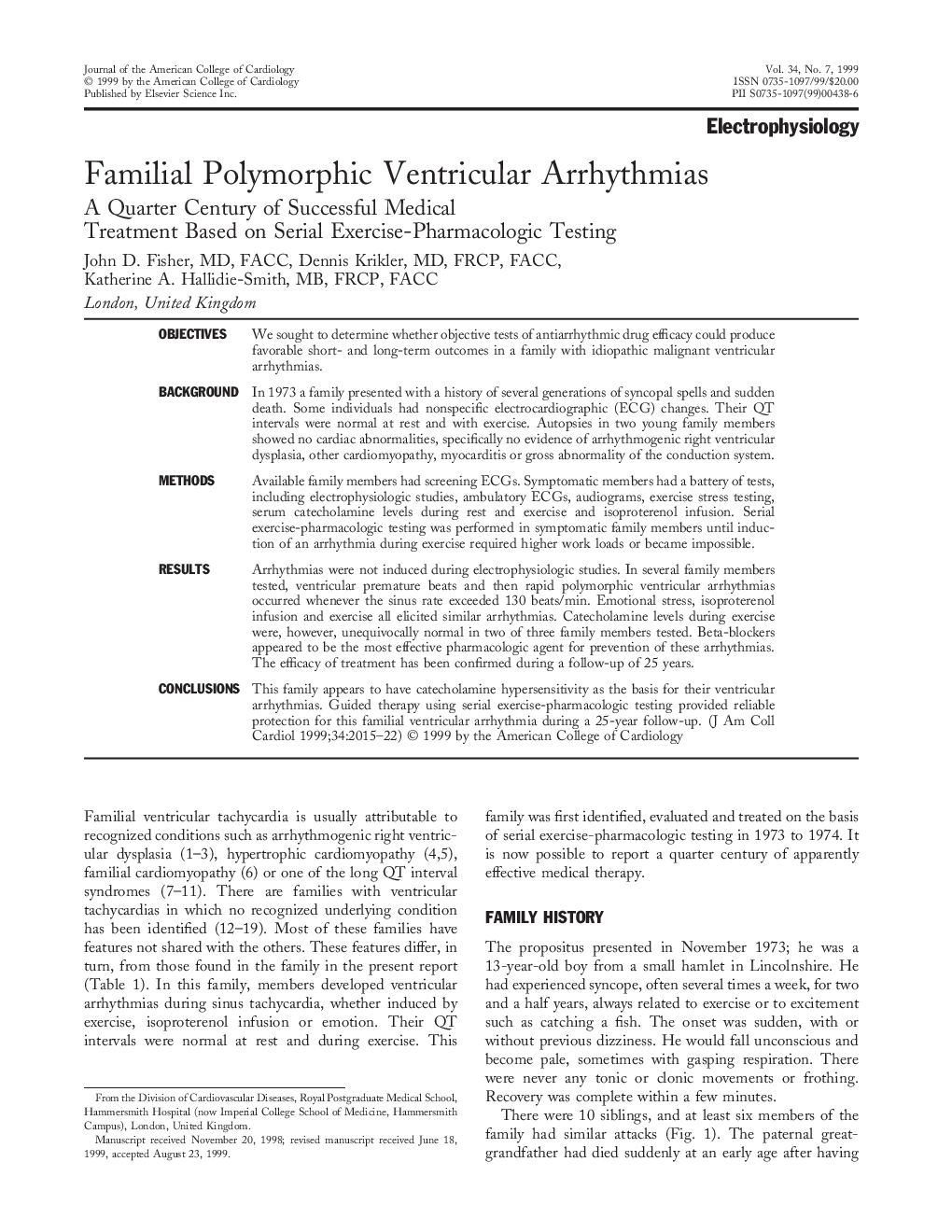| Article ID | Journal | Published Year | Pages | File Type |
|---|---|---|---|---|
| 2955240 | Journal of the American College of Cardiology | 2015 | 8 Pages |
OBJECTIVESWe sought to determine whether objective tests of antiarrhythmic drug efficacy could produce favorable short- and long-term outcomes in a family with idiopathic malignant ventricular arrhythmias.BACKGROUNDIn 1973 a family presented with a history of several generations of syncopal spells and sudden death. Some individuals had nonspecific electrocardiographic (ECG) changes. Their QT intervals were normal at rest and with exercise. Autopsies in two young family members showed no cardiac abnormalities, specifically no evidence of arrhythmogenic right ventricular dysplasia, other cardiomyopathy, myocarditis or gross abnormality of the conduction system.METHODSAvailable family members had screening ECGs. Symptomatic members had a battery of tests, including electrophysiologic studies, ambulatory ECGs, audiograms, exercise stress testing, serum catecholamine levels during rest and exercise and isoproterenol infusion. Serial exercise-pharmacologic testing was performed in symptomatic family members until induction of an arrhythmia during exercise required higher work loads or became impossible.RESULTSArrhythmias were not induced during electrophysiologic studies. In several family members tested, ventricular premature beats and then rapid polymorphic ventricular arrhythmias occurred whenever the sinus rate exceeded 130 beats/min. Emotional stress, isoproterenol infusion and exercise all elicited similar arrhythmias. Catecholamine levels during exercise were, however, unequivocally normal in two of three family members tested. Beta-blockers appeared to be the most effective pharmacologic agent for prevention of these arrhythmias. The efficacy of treatment has been confirmed during a follow-up of 25 years.CONCLUSIONSThis family appears to have catecholamine hypersensitivity as the basis for their ventricular arrhythmias. Guided therapy using serial exercise-pharmacologic testing provided reliable protection for this familial ventricular arrhythmia during a 25-year follow-up.
